Rubber Mulch vs. Wood Mulch
- January 12, 2024
- 2 comment
When engaging in landscaping activities, one crucial aspect to contemplate is the selection of an appropriate mulching method for your garden beds. The application of mulch serves various beneficial purposes, including the conservation of soil moisture, stabilization of soil temperature, enhancement of soil health, suppression of weed growth, and prevention of erosion.

Rubber Mulch vs. Wood Mulch Table Contents:
- What Are the Advantages of Wood Mulch
- What Are the Drawbacks of Wood Mulch
- What Are the Advantages of Recycled Rubber Mulch
- What Are the Drawbacks of Recycled Rubber Mulch
- How Is Recycled Rubber Mulch Made
- Does Recycled Rubber Mulch Contain Metal
- Can Rubber Mulch Pose Toxicity Risks to Plants
- Is Recycled Rubber Mulch Heavy
- How Much Does Recycled Rubber Mulch Cost
- How Long Does Recycled Rubber Mulch Last
- Is Recycled Rubber Mulch Safe
- Does Rubber Mulch Cause Cancer
Initiating tire recycling operations in 1996, Tire Recycling Atlantic Canada Corporation (TRACC), located in New Brunswick, Canada, has consistently expanded and modernized its facilities. Chances are, you or your children have encountered their products, whether it’s mats or playground surfaces. Notably, TRACC has diversified its offerings to include robust rubber landscaping mulch, available in three colors – black, cedar, or brown.
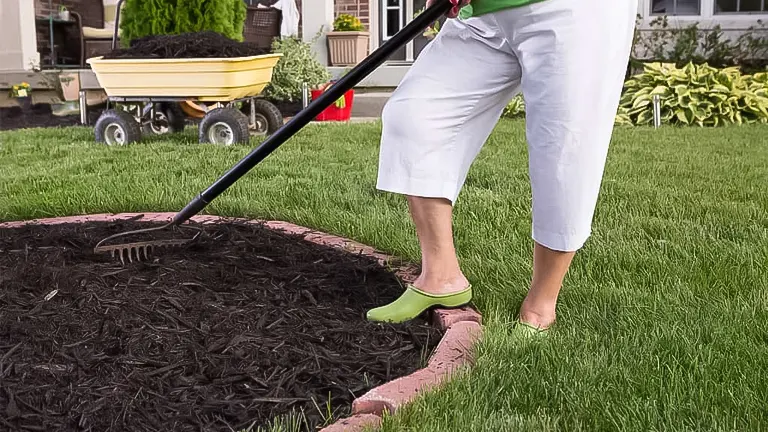
Other notable suppliers of recycled rubber mulch in North America encompass Rymar Rubber and HEFFCO. To explore the availability of these products, it is advisable to inquire at your local home renovation store.
To assess the sustainability of recycled rubber mulch in comparison to wood mulch, we will delve into various features of these landscaping options in the discussion that follows.
1. What Are the Advantages of Wood Mulch
- It is a biodegradable material that naturally decomposes and returns to the soil.
- Low energy consumption is associated with its production, as it is a byproduct of wood processing.
- Bark mulch, a common type of wood mulch, is relatively inert and decomposes at a slow rate, helping to preserve soil nutrients.
- Typically, non-toxic iron oxide and carbon black dyes are employed for coloration. In some cases, additional colors are achieved using vegetable-based dyes.
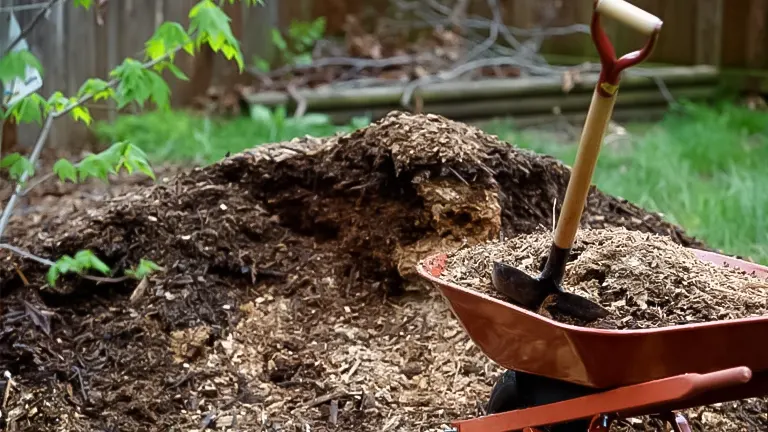
2. What Are the Drawbacks of Wood Mulch
- The material undergoes relatively rapid biodegradation.
- Regular replacement is necessary, typically every year or two, due to decomposition or washout.
- Decomposition of wood mulch results in the removal of nitrogen nutrients from the soil.
- It tends to mat down, forming a barrier that hinders water penetration and airflow.
- Recycled wood mulch may carry potential risks, such as the presence of toxic substances like arsenic or creosote from inadequately sorted treated lumber waste.

3. What Are the Advantages of Recycled Rubber Mulch
Utilizes repurposed waste products, specifically recycled tires, thereby reducing disposal impacts:
- Exhibits water resistance, as it does not absorb water.
- Acts as a deterrent to fungus and mold development.
- Provides insulation to the soil, protecting it from excessive heat and adverse weather conditions.
- Retains its aesthetic appeal consistently across different seasons.
- Demonstrates resilience against compression, wind dispersal, and washout.
- Effectively controls weed growth, with weed seeds dehydrating in the mulch before reaching the soil.
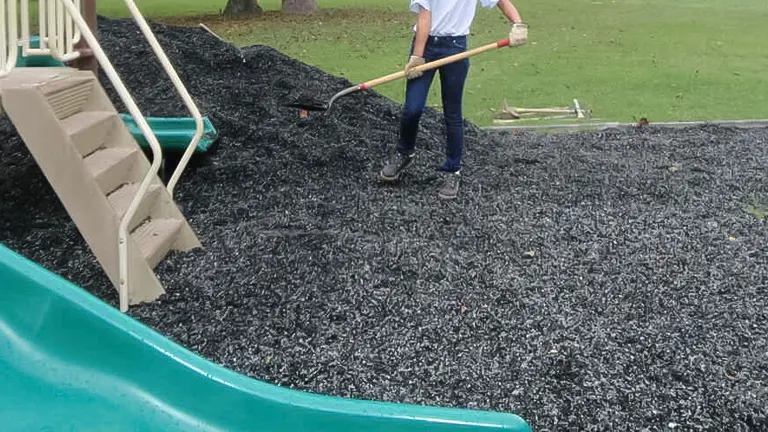
4. What Are the Drawbacks of Recycled Rubber Mulch
- Lacks biodegradability, as it does not naturally break down over time.
- Fails to contribute to soil enrichment or increased soil biodiversity through decomposition.
- Poses a hazard when ignited due to the burning of rubber.
- Presents challenges for removal once settled into the ground; it cannot be easily tilled into the soil.
- Carries the risk of soil contamination with metals if the tires were not adequately processed during production.
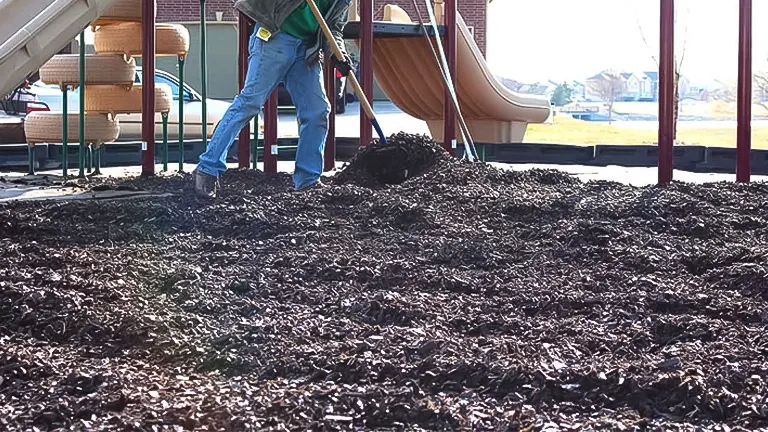
5. How Is Recycled Rubber Mulch Made
The production process of recycled rubber mulch involves the transformation of ground-up new, defective, or used tires, along with waste tire buffing’s that would otherwise be destined for landfills. This intricate manufacturing procedure commences with the thorough cleaning of the tires, ensuring the removal of any contaminants.
Subsequently, metal wires are extracted from the tires, and the remaining rubber is shredded into diverse sizes, tailored to the specific intended applications of the mulch. This meticulous process not only repurposes discarded tires but also ensures the creation of a versatile and eco-friendly material that can be employed in various landscaping contexts.
6. Does Recycled Rubber Mulch Contain Metal
Recycled rubber mulch may potentially contain residual metal strands that were inadvertently missed during the manufacturing process. To ensure the absence of such metal components, it is advisable to reach out to the manufacturer and inquire about their production methods, specifically those addressing metal removal.

As a precautionary measure, when applying rubber mulch, it is recommended to wear protective gloves and knee pads to safeguard against any unexpected presence of metal elements. This added diligence contributes to a safer and more secure application of recycled rubber mulch in various landscaping scenarios.
7. Can Rubber Mulch Pose Toxicity Risks to Plants
Recycled rubber mulch may contain zinc, and while it is generally free from diseases caused by pathogens, it’s important to consider the potential impact of elevated zinc levels on plant growth.
While high levels of zinc can act as an inhibitor for plant development, in cases of zinc-deficient soils, rubber mulch can actually serve as a beneficial source of zinc fertilizer, contributing to the overall health and nourishment of plants.
It is crucial to carefully assess the specific soil conditions and zinc levels before applying recycled rubber mulch to ensure optimal plant well-being and growth.
8. Is Recycled Rubber Mulch Heavy
Recycled rubber mulch tends to be weightier compared to wood mulch, making transportation more challenging. To address this, consider sourcing from a local manufacturer or supplier to minimize transport distances. Despite its weight, the heaviness of recycled rubber mulch contributes to enhanced durability and longevity, especially in the face of heavy rain and strong winds, surpassing the resilience of wood mulch.
9. How Much Does Recycled Rubber Mulch Cost?
The cost of recycled rubber mulch typically ranges from $8 to $14 per cubic foot, contingent upon the grade and quantity purchased. In contrast, natural wood mulch is priced at $2 to $3 per cubic foot.
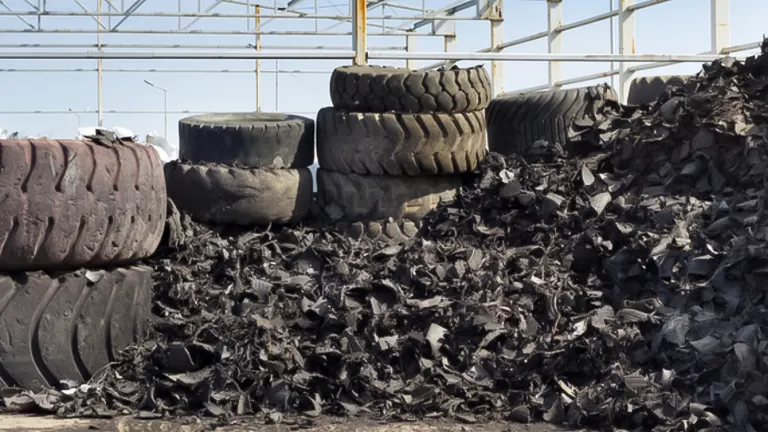
Although recycled rubber mulch commands a higher initial cost, its prolonged lifespan, lasting up to ten years or more according to most manufacturers, proves to be a cost-effective investment. This is in stark contrast to wood mulch, which necessitates replacement approximately every two years, contributing to additional expenses over time.
10. How Long Does Recycled Rubber Mulch Last
Recycled rubber mulch boasts an extended lifespan when compared to its wood counterpart. Many manufacturers indicate that recycled rubber mulch can endure for a minimum of ten years, if not longer. The dyes used in the manufacturing process of rubber mulch also exhibit greater resistance to fading and deterioration compared to those used in wood mulch. This prolonged durability makes recycled rubber mulch a reliable and enduring choice for landscaping, ensuring lasting aesthetic appeal and functionality over an extended period.
11. Is Recycled Rubber Mulch Safe?
Neither the Environmental Protection Agency (EPA) nor the Consumer Product Safety Commission has explicitly declared crumb rubber as unequivocally safe. Both organizations have emphasized the need for additional studies.
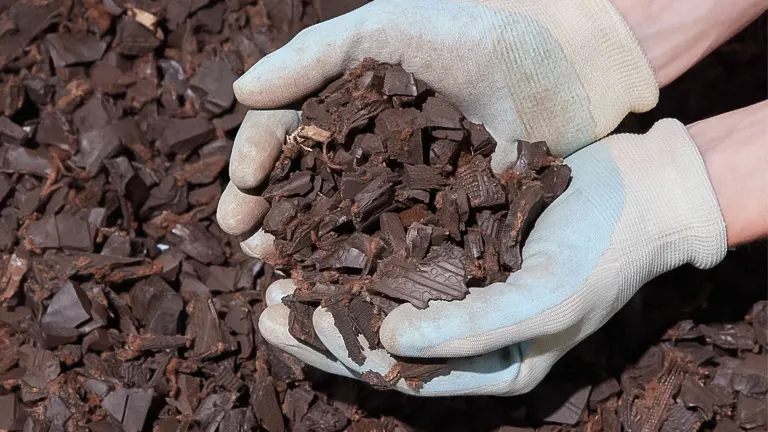
Despite this, they recommend and endorse the use of rubber mulch. It’s important to note that rubber mulches can leach various plasticizers and accelerators utilized in tire manufacturing into the soil. Therefore, it is imperative to choose products that have undergone testing for leaching and pose no risks to individuals or the environment.
12. Does Rubber Mulch Cause Cancer
Research thus far has not established a link between recycled rubber mulch and cancer. The EPA has concluded that while certain harmful chemicals may be present, exposure to these substances is not associated with adverse health effects in humans. However, it is crucial to recognize that different mulches have distinct compositions.
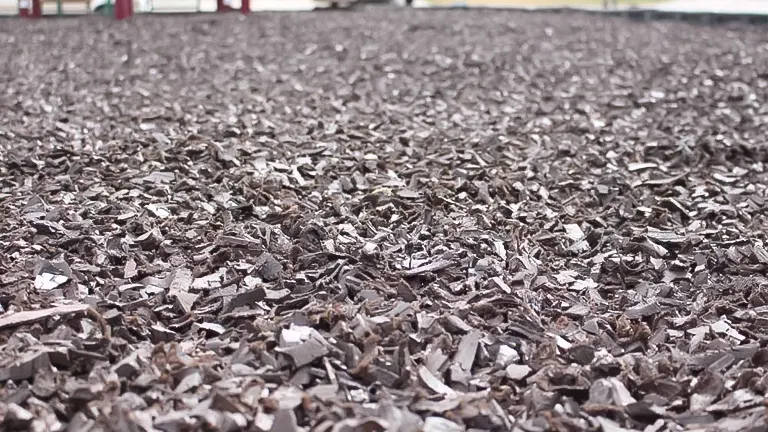
To ensure safety, inquire about the source and production process from your supplier. For instance, recycled wood mulch should exclude treated lumber containing arsenic and creosote, while recycled rubber mulch should be free of metals.
While recycled rubber mulch may entail a higher initial cost, its longer lifespan often translates to lower long-term expenses. It is advisable to compare prices among suppliers to make an informed decision based on both upfront and long-term costs.
Final Conclusion
In conclusion, both wood chip mulch and recycled rubber mulch emerge as sustainable products, utilizing byproducts from various processing methods and not requiring additional material resources from the earth. When contemplating the right choice for your upcoming landscaping project, several pivotal considerations should guide your decision-making. Firstly, evaluate whether you prioritize a durable product that doesn’t necessitate frequent replacements, or if a more biodegradable option aligns better with your preferences.
Additionally, consider the visual aspect of the completed landscaping project. The images on this page showcase cedar bark mulch alongside rubber mulch, prompting a visual comparison. Can you distinguish between the two based on appearance? Addressing these questions will steer you toward selecting the mulching solution that best aligns with your specific needs and preferences.
Frequently Asked Questions
- What is the primary material used in rubber mulch, and how does it differ from the organic composition of wood mulch?
Rubber mulch is primarily derived from recycled tires, while wood mulch is composed of organic materials such as bark or wood chips. - Is one type of mulch more environmentally friendly than the other?
Both rubber and wood mulch can be considered environmentally friendly, but the environmental impact may vary. Consider factors such as biodegradability, sustainability, and the source of raw materials. - Do rubber and wood mulch have similar benefits in terms of weed control and moisture retention?
Both types of mulch offer benefits such as weed control and moisture retention, but the specific characteristics may differ. Explore which mulch aligns better with your landscaping goals. - Which mulch type requires less maintenance and needs to be replaced less frequently?
Evaluate the longevity of each mulch type to determine which requires less maintenance and offers a longer-lasting solution for your landscaping needs. - Are there any safety concerns associated with rubber mulch, such as chemical leaching or potential harm to plants?
Address safety considerations by understanding the potential for chemical leaching in rubber mulch and ensuring it does not pose risks to plant health. - What factors should be considered when choosing between rubber and wood mulch for playgrounds or areas with heavy foot traffic?
Consider factors such as shock absorption, comfort, and durability when selecting mulch for high-traffic areas like playgrounds. - How do the costs of rubber mulch compare to wood mulch in both the short term and long term?
Compare the initial and long-term costs of rubber and wood mulch to make an informed decision based on your budget and landscaping goals. - Can rubber mulch be used in vegetable gardens, or is wood mulch a safer option for edible crops?
Explore the suitability of rubber mulch for vegetable gardens and assess whether any potential leaching or chemical concerns may affect edible crops. - Which type of mulch is more effective in insulating soil from temperature extremes and promoting overall soil health?
Examine the insulating properties of both rubber and wood mulch and their impact on soil temperature and health. - Are there any specific considerations for using rubber or wood mulch in regions with extreme weather conditions, such as heavy rainfall or intense sunlight?
Understand how each type of mulch performs in various weather conditions and choose accordingly, taking into account factors like water runoff, color retention, and resistance to decomposition.
We’re eager to learn from your experiences! Feel free to share your thoughts and personal insights on the choice between Rubber Mulch and Wood Mulch in the comments below. Your valuable input may assist others in making well-informed decisions for their landscaping projects!

Edward Smith
Forestry AuthorWoodworking is about more than crafting; it's a harmonious connection with nature, mastering tools, and preserving our environment. I'm here to share my knowledge and experiences with you, forging a future where we can embrace wood's beauty and utility while safeguarding our forests' health and diversity.



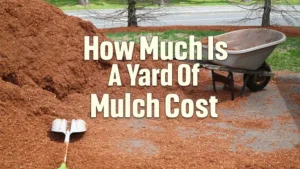
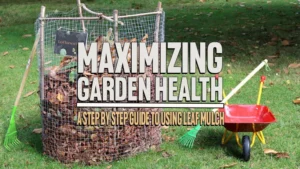

is rubber mulch safe for playgrounds?
Christine
January 12, 2024 2:03 amYes! Rubber mulch, made from rubber tires, is a popular choice for playgrounds due to its durability and high impact ratings, which can reduce injury risks from falls.
Edward Smith
January 12, 2024 2:08 am